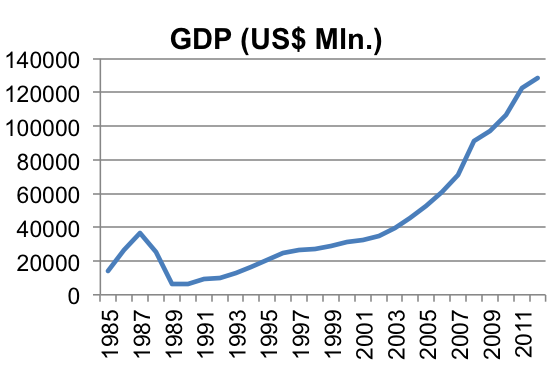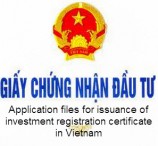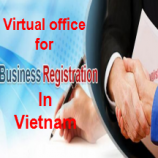About Vietnam economy
Vietnam economy is a attractive place for foreign investment in South East Asia with many investment opportunities, but some challenges head.
Post date: 22-08-2013
16,215 view(s)
1. Viet Nam economy at a glance:
Viet Nam is widely regarded as an attractive place to invest. Favorable government policy and laws have combined with Viet Nam”s natural assets and advantages to produce a stand-out performer in South-East Asia. Influential factors include:
• Viet Nam had a population of 88,775,500 people (2012), making it the 13th largest nation in the world by population, with an adult literacy rate of 92.5%;
• According to World Bank 2012 GDP per capita at USD 1,596, grew 13% compared with 2011. GDP Growth of 5%, declined gradually in the last decade from 8,48 to 5,32 %.
• Viet Nam was listed, in a recent United National Conference on Trade and Development survey, as the eighth most popular destination for transnational corporations” foreign direct investment in 2010-2012.
• Viet nams belong to the 14 most exciting frontier market in the world by Blomberge Market

GDP Vietnam Economy
2. Investment Opportunities
2.1 Economy of Vietnam
Over the past 25 years, Viet Nam has shifted from a central command-based economy to one with significant market elements. During this period, the economy has experienced rapid growth with historic highs in foreign direct investment and trade.
Viet Nam”s major industrial sectors are manufacturing and agriculture. Key exports include crude oil, marine products, rice, coffee, rubber, tea, garments and shoes and pepper, while major imports include machinery & equipment, petroleum products, fertilizer, steel products, grain and motorcycles.
Vietnam’s fundamentals are also supported by its demographics as the country’s young, reasonably well educated population looks to enjoy the advantages of Vietnam’s shift to a more market oriented economy.
2.2 Economic Geography of Vietnam
Viet Nam is located in the south-eastern most extremity of the Indochina peninsula and occupies over 331,600 square kilometres, making it the third largest country in South-East Asia. Border neighbours are China to the north and Laos and Cambodia to the west.
With a north-to-south distance of approximately 1,650 kilometres, Viet Nam”s land is varied, with mountain ranges and highlands in the north-west, north-east and central regions, and plains and river basins in the north and south regions.
2.3 Vietnam government policy – ‘economic renovation’ and beyond
Following a historical period of closure, in 1986 Viet Nam introduced the ”economic renovation” policy, a key aim of which was to open Viet Nam to foreign investment. The reforms introduced under this policy have transformed Viet Nam from a centrally-planned economy to a socialist-oriented market economy.
Viet Nam”s efforts to attract foreign investment have been very successful since the late 80”s. The Foreign Investment Agency reports that by June 2013 Viet Nam had over 15.067 registered foreign investment projects, with a total registered capital of over USD 218,8 billion. These investments ranged across a variety of sectors, with manufacturing, real estate, hospitality, construction and information & communication all key sectors attracting large amounts of direct foreign investment.
Key legislative and policy developments for Viet Nam as an investment destination:
• 29 December 1987 The first Law on Foreign Investment is passed by the National Assembly.
• 15 April 1992: The Constitution recognises, for the first time, the development of a market economy, the concept of private property and the right of individuals to conduct business activities. It expressly recognises foreign owned capital as a legitimate sector of the economy, encourages foreign investment and guarantees that assets of foreign investors will not be expropriated.
• 12 November 1996: A new Law on Foreign Investment is passed. There are significant improvements on the 1987 instrument, including allowing new forms of investment including Build-Operate-Transfer contracts. The revised law also permits investors to assign their interests in a foreign owned enterprise to other parties.
• 9 June 2000: The Law on Foreign Investment is amended to include recognition of the right of foreign investors to merge their investment company with another, to acquire companies and branches and the right to transfer the form of investment.
• 13 July 2000: The Bilateral Trade Agreement is signed between Viet Nam and the United States of America.
• 14 June 2005: A new Civil Code and Commercial Law are passed by the National Assembly. These laws reform Vietnamese contract law, including new provisions governing land use, intellectual property rights, technology transfer, commercial contracts and trading rights.
• 29 November 2005: The Law on Investment and Law on Enterprises are passed by the National Assembly. These cornerstone laws establish a common regime and unified ”company” law for domestic and foreign investment in Viet Nam.
• 11 January 2007: Viet Nam accedes as the 150th member of the World Trade Organisation (WTO)
Meanwhile, significant ongoing legal and regulatory reforms have liberalised the Vietnamese economy resulting in a more pro business environment for both domestic and foreign investor. Steps have been taken to open Vietnam’s capital markets and implement the “equitisation” of State-owned enterprises.
3. Challenges of Vietnam economy:
Notwithstanding the rapid legal, economic and social changes that have occurred since Vietnam opened its doors to foreign investment and trade, Vietnam is not without its problems.
3.1 Bureaucracy
The country’s still evolving legal and regulatory framework has not adequately addressed a number of important legal and practical issues, while bureaucratic and administrative red tape continues to delay and complicate the approval and implementation of investment projects, as well as such programs as the equitisation of State-owned enterprises.
As in most emerging economy, bureaucracy is one of the challenges that investors may face while entering Vietnam”s market. While the Government”s policy is clear and pro-investors, the problems arise at the implementation stage where local authorities may understand the regulations differently than what were originally drafted.
At the root of the bureaucracy is an un-easy task to harmonise between market economy on the one hand and the socialism orientation on the other, as well as the confusing legal system, with laws and regulations being constantly and usually not cohesively enacted and amended. For this one need to look closer to Vietnam legal systems as well as it historical settings.
Vietnamese legal system is a civil law legal system, beyond that it is hard to categorise. While features of the French legal family are still visible in the Vietnamese contract law today, it would be a mistake to think that the current Vietnamese Civil Code is just a repeat of the French Napoleonic Code. The laws of other socialist and ex-socialist countries, such as Russia and China, also influence greatly on Vietnamese civil law. With its long history of wars, foreign influences and its specific political system, it is difficult to qualify Vietnamese legal system into which legal family. For certain, Vietnamese legal systems belong to civil law legal systems.
In Vietnam, law is not only a body of rules enacted by the National Assembly. The National Assembly meets only two sessions a year. Therefore, only the most important acts are passed by laws: the codes, budget and various tax laws, and important economic laws such as investment law or enterprise law. The remaining part of Vietnamese law is governed by ordinances from the Standing Committee President and the sub-laws documents, in the hierarchy as follows: ordinances, resolutions, decrees, decisions, circulars of the Ministries and directives. In short, the National Assembly passes Laws, the Standing Committee issues Ordinances and the Government issues Decrees. Those laws and sub-laws are subject to be further interpretation and sometime supplementation by Circulars , Resolutions and Decisions of the Ministries explaining the application of the higher legislation. Decrees are sometimes issued with attached Regulations. To date, there is no Constitutional Court to exercise judicial review of Decrees and Regulations. Such control is in hand of the National Assembly, which is rarely used. As such, investors might feel frustrated facing sub-law regulations do not implement the spirit or intention of the laws or the international conventions. They may also feel confused when too many authorities have the right to interpret or regulate one act, but none of them prevail other in bearing responsibilities toward investors. It is hoped that with time and judicial reform from the Government, the legal system will become more transparent which in turn will enhance the quality of the legislation.
Thus, the primacy of legislation is not yet a characteristic of the Vietnamese legal system, many executive organs also exercise legislative functions. This is so because of the philosophy behind the concept of law. According to Marxist philosophy, law is an expression of will of the governing class, an instrument of the governing class to develop the country within the framework of the Party”s resolutions. Without understanding philosophical thinking, one may not understand why Vietnamese law is so special and differently regulated as regard to certain issues, such as land or different kinds of properties.
3.2 infrastructure
As a developing country infrastructure can be patchy and problematic. Although Vietnam has received a large amount of official development assistance (ODA) loans for infrastructure development, but with a country developing from 6 to 10 percent GDP per year, demand for electricity or water are always higher than supply. Traffic jam, port handling inefficiency, severe deficiency in road quality and traffic control may challenge the opportunities created by low labour costs or political stability. Having said that, Vietnam has one of the highest Internet penetration rates in the region and a reliable and comprehensible telecommunications network. Infrastructure creates challenges for investors, but equally opportunities for those who would like to invest in private public partnership (PPP) projects such as build-operate-transfer (BOT), build-transfer (BT) or independent power plants (IPP) projects.
3.3 Education
The first and foremost challenge in Vietnam”s education is foreign language (i.e., English). The official language is Vietnamese language, which is spoken by the Viet people. Though a large part of Vietnamese vocabulary is borrowed from Chinese, it was written in a Latin scripts, invented by Alexandra de Rhodes in the 17th century and elaborated in the early 20lh century. Vietnamese is taught from primary schools to doctorate levels, and although English is widely taught, it is not widely used and all foreign language documents must be translated and legalized into Vietnamese before being submitted to Government authorities. As a consequence the vast majority of the population only speak Vietnamese due to the sporadic quality of training in other languages.
As with the infrastructure and legal system, Vietnam”s education system is also in a state of flux. Schools are learning how to adapt to preparing their students for professional rather than manual based market place. This can make it difficult to find administrative staff with the knowledge and experience to work within a professional business environment. However as noted above the young generation are eager to learn the necessary skills to work alongside foreign investors and businesses. Therefore if given the opportunity through for example guidance and in house training, such difficulties can be overcome to created a dynamic and productive workforce.
At the same time, these challenges represent significant opportunities for both the domestic and foreign investors.
This page is intended to provide an overview of the legal framework and regulatory procedures most likely to be relevant to foreign investors considering establishing a business in Vietnam. It also identifies certain legal and practical issues and risks that should be considered by companies planning to invest in or do business with Vietnam.
Lawyervn.net
Relate News
- › The Trans-Pacific Partnership Agreement (TTP)
- › Introduction to Vietnamese laws on the Intellectual Property
- › About dispute resolution in Vietnam
- › Introduction about capital markets of Vietnam
- › Introduction to the credit institution system in Vietnam
- › About forms of foreign investment in Vietnam














Send your comment